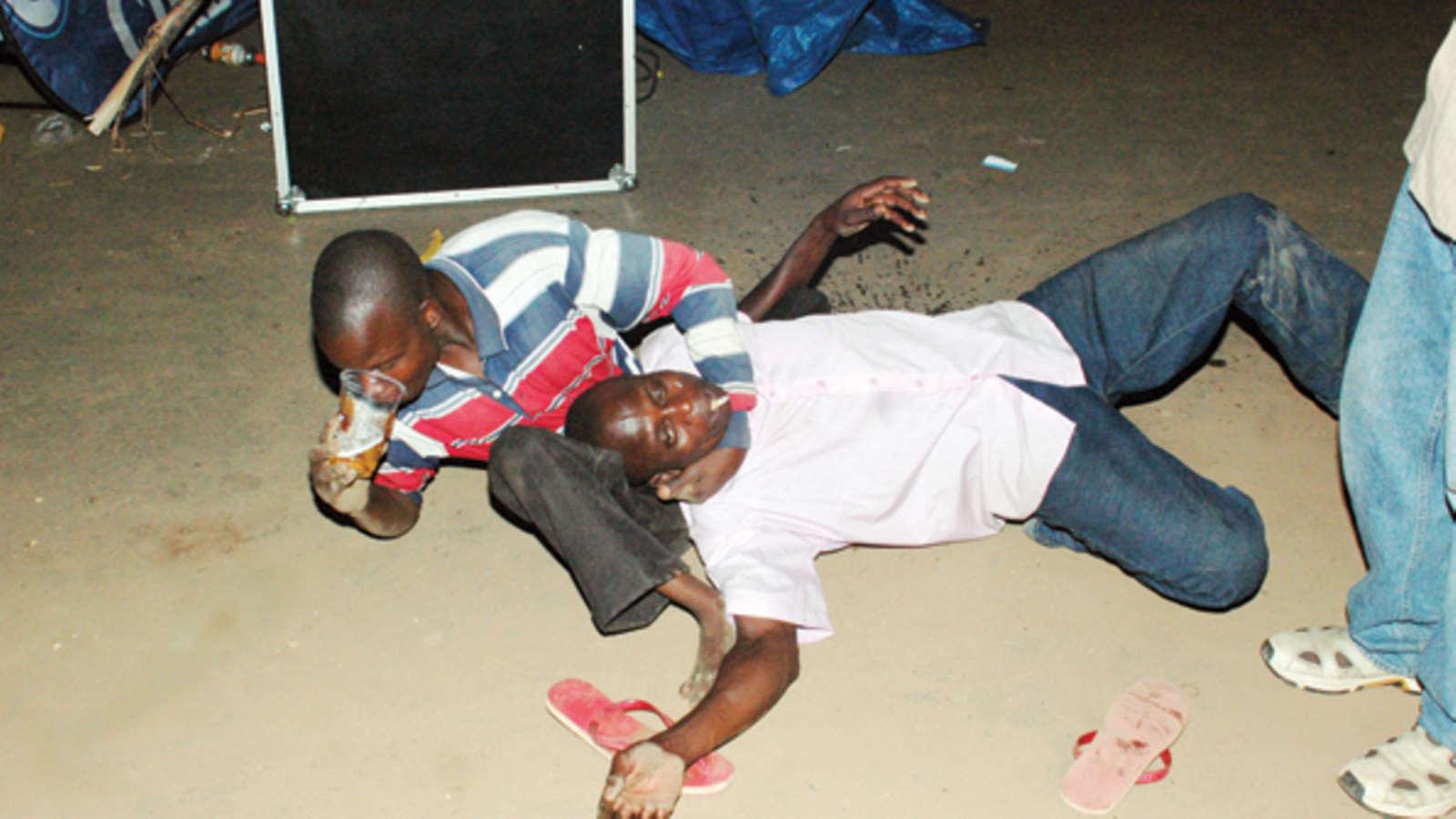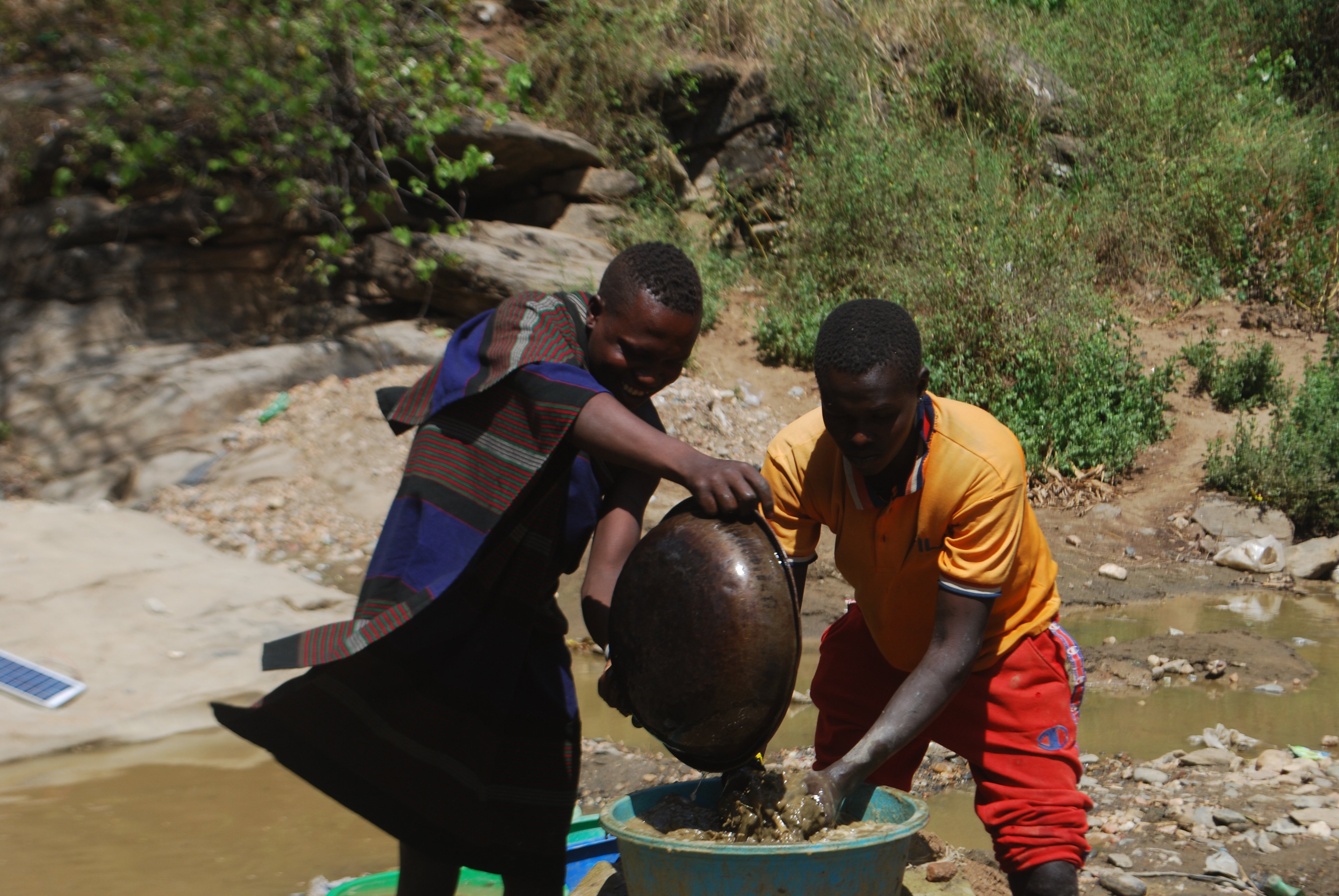Prime
Illicit Alcohol: The silent plague afflicting Karimojong

Women taste adakai (malwa dregs) after purchasing it at a trading centre near Moroto Town last year. Karamoja has registered soaring cases of alcohol consumption over the last decade. Photos/file
What you need to know:
- The sale of the liquor is unregulated and untaxed, and comes into the sub-region through several supply chains, including vehicles, motorcycles, and bicycles.
Peter Kasango lives in Magamaga Town Council, Mayuge District. He ekes a living by brewing a crude and potent liquor from sugarcane molasses.
The pulse of Busoga’s economy is firmly placed in the hands of sugar barons—largely the wealthy Asian Ugandan families who own large tracts of land. The locals provide cheap labour on the farms where they are paid a pittance in a slave-master relationship.
To escape the exploitative nature, the illicit alcohol breweries are spread across Busoga as an offshoot of this sugar industry where scrawny and dishevelled children are usually seen picking cane across the treacherous rows of sugarcane plantations.
In every nook, there are furnaces peppered with glowing embers of fire that light the skies in the night as illicit liquor is brewed. This alcohol is then transported by matatus and lorries to different destinations.
One of the largest recipients of this illicit alcohol from the sugar belt is Karamoja— already battered by the highest levels of abject poverty, recurring famine, internecine clan fights and cattle rustling— turning the sub-region into a vortex of turbulence.
The locals also consume locally fermented brews using sorghum and millet, which have sociocultural, nutritional, and economic significance. But it is the illicit liquors that are sold across drinking joints that have sprouted across villages in Karamoja, which are posing a new threat.

Many people consume alcohol to forget their problems. Photo/file
Karamoja, which is predominantly a pastoral and agro-pastoral community, has registered soaring cases of alcohol consumption over the last decade.
Uganda in 2004 registered the highest annual consumption of alcohol in the world, with 19.47 litres of pure alcohol being consumed per capita among persons aged 15 years and above; in addition to an unrecorded consumption estimated at 10.7 litres of pure alcohol annually per adult.
READ: Police destroy waragi worth Shs60 million
The national average today stands at about 18 litres per capita but Karamoja’s average stands at a staggering 48 litres per capita.
Although subsequent reports have indicated a reduction in consumption, the country is still among those with the highest annual per capita consumption in Africa and has no national monitoring system in place.
Whereas alcohol consumption is widespread in Uganda, the sudden rise in the vice and the precipitous decline in health indicators in Karamoja are a by-product of the long history of disenfranchisement and exacerbation of social and economic strains set in motion by forced disarmament.
The widespread and arguably irreversible loss of livestock, especially cattle, for many households robbed communities not only of their primary source of livelihoods but also of sacred entities, which hold enormous socio-cultural and symbolic value, according to a study titled, “Trauma, loss and other psychosocial drivers of excessive alcohol consumption in Karamoja, Uganda,” published by the Springer Open journal.
Mr John-Bosco Alinga, a grassroots leader in Nabilatuk District, says alcohol is as lethal as a gun.
“It has finished our people from here. If I take you to the centres down there you will find people taking alcohol. You know we do not have food. I do not know where this problem of alcohol came from. For them they are looking for profits but they do not know they are killing people. Sometimes we even call the police and pour the alcohol and it reduces,” Mr Alinga says.
ALSO READ:
The sale of the liquor is unregulated and untaxed, and comes into the sub-region through several supply chains including vehicles, motorcycles, and bicycles. Evidence also shows that trucks that transport limestone to the Tororo Cement factory return carrying jerrycans packed with illicit liquor, which is sent into the deeper recesses in Karamoja.
This is often consumed in mines where hundreds of locals spend the day cracking boulders in the punishing heat.
The by-laws, ordinances and the national ban on the sale of sachet waragi are not enough to halt the sale of illicit alcohol.
Police has often confiscated this illicit alcohol but have secretly sold it to the locals.
In Kosiroi, Tapac Sub-county in Moroto District, the typical day for the worker starts at the crack of dawn where hundreds stream into the mines.

Police officers pour crude waragi contained in drums in Kakolye Village, Kampswahili Parish in Moroto District in 2015.
For a day’s wages, the worker is paid as low as Shs7,000. For the thousands of disillusioned workers who provide slave labour at the mines, the consumption of alcohol is an escape route from their pain and anguish.
“The community faces a lot of challenges, we break stones while thirsty and hungry, no water, no food and at the end of the day they give you Shs150,000 [for an entire truckload] for a trip. Then Shs150,000 cannot help you. Maybe you have to pay a loan and you find you have only Shs10,000 or even Shs5,000,” says Flavia Nakut.
Stephanie Adupa, a female Councillor for Tapac Sub-county, says: “There is a lot of child abuse and sexual abuse done here at the mines, women and girls are abused sexually. We have people here, they call loaders, they are the ones harassing the women.”
Others who are meant to be paid receive illicit alcohol in exchange for the day’s wages.
The workers can barely afford meals in an area battered by long spells of famine. During breaks, they consume healthy fermented local brews but prefer hard liquor, whose alcohol content is higher. Sometimes, the brewers add marijuana or jet fuel to make it more potent.
When this alcohol was subjected to laboratory tests, it contained high concentrations of hazardous metal and poison as a result of high methanol levels.
When darkness envelopes Moroto, locals converge around areas selling the liquor, which is usually consumed in small bottles.
There are no restrictions as those under the age of 18 years are sold the illicit liquor. Those who are too drunk can barely walk home and have to sleep by the roadside.
The consumption has had visible effects on the household economy, interpersonal relationships, and the health and well-being of the communities.
There is an upsurge in domestic violence as a result of the sale of illicit alcohol.
“That waragi, that distilled alcohol contains poison. We had a chance to take a sample to the laboratory and we discovered that the percentage was more than 65 percent, can you imagine? It is like a disinfectant. The alcohol is too high because it is distilled without proper methods. Lab test results showed that it actually has methanol which is a poison that can cause permanent blindness. We have had experience of people who have died,” Dr Pierluigi Rossaningo, the health officer of Moroto Diocese, says.
This comes at a time when thousands of families have been displaced from their ancestral lands as local and foreign investors make a dash for the mineral wealth buried in the sub-region.
A total of 17,083 square kilometres of land has been doled out for mineral exploration and extraction activities, according to official data. In 2018, Chinese mining company Sunbelt was given 3.3 square kilometres of land to set up a $13 million dollar marble mining factory in Rupa Sub-county.
A year later, the company expanded its operations to cover an additional 4.1 square kilometres, ostensibly after a deal with local leaders. Hundreds of families have since been pushed out of their ancestral homes, local officials say. Locals accuse Rupa Community Development Trust, a community trustee group created three years ago, of conniving with investors to steal their land currently guarded by the army.
These mining activities have also led to environmental destruction across Karamoja Sub-region and the few water sources have been contaminated as a result of mining activities.
“There is a lot of extracting and this is guided by the challenge of capitalism. The capitalistic nature of extracting these resources not for the benefit of the people but for the needs of the capitalists. Multinational corporations have come in and these are not only foreign but also some are local. The whole problem of licensing in the sector is opaque,” Andrew Byaruhanga of Resource Rights Africa (RRA) told this publication.
“We have realised that instead of engaging with local governments in the licensing regime, we get companies coming from the central government from Kampala and you see them in communities fencing off people’s land without engaging the local structures and community members. That is a huge problem because people here in Karamoja land is owned customarily, the resultant effect has gone to affecting other livelihood activities such as pastoralism, people are no longer grazing as they used to,” he added.
Here in Nabilatuk Town Council, the pernicious effect of alcohol abuse is laid bare in this graveyard where some young men were recently interred.
Karamoja, a land rich in mineral wealth, is afflicted by the paradox of plenty. Its wealth has set off a scramble amongst local and multinational blue-chip firms keen to make a profit at the expense of locals.

Miners pun gold from mud at River Nakabaat in Rupa Sub-county, Moroto District, last year. The illicit alcohol is often consumed in mines where hundreds of locals spend the day cracking boulders in the punishing heat.
The risks
Excessive consumption also causes cirrhosis of the liver, inflammation of the nerves, and lack of mental control, which have led in many cases to insanity, malnutrition, blindness, muscular weakness and wasting, homicidal impulses and death.
“Once you take more alcohol, every part of your body will be affected, the heart, the cardiovascular system as a whole, you get high blood pressure… that’s why we actually tell people with high blood pressure not to drink alcohol. You can also get cancer, especially cancers of the mouth and throat. Alcohol starts damaging the liver, you may get more than 10 percent fat in your liver and we start saying you have a fatty liver. Then the liver may actually die in phases when it’s trying to resurrect in other places and it becomes fibrous, it develops more fibres than the working area then we say one has gotten cirrhosis of the liver,” Dr Vincent Karuhanga, a general practitioner, told this publication.




